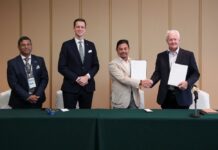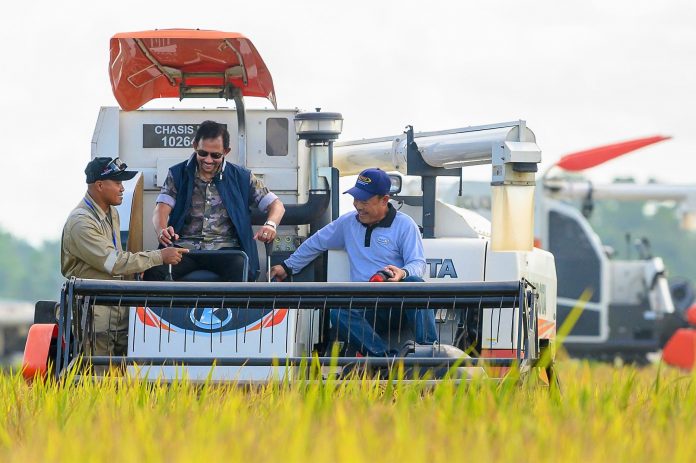
His Majesty the Sultan and Yang Di-Pertuan of Brunei Darussalam called on stakeholders to follow through with more aggressive measures to increase rice self-sufficiency as he officiated the harvest of Brunei’s newest hybrid rice strain Sembada188 at the Wasan Agricultural Development Area (KKP) yesterday.
Sembada188 – developed through a research collaboration between Brunei’s Department of Agriculture and Agrifood (DAA) and Indonesia’s
DAA’s head of paddy and crop protection Khairunnisa Hj Omar Ali said they are confident Sembada will yield six tonnes of paddy per hectare each season based on farm trials, which is double that of Brunei’s first hybrid strain Laila. The seeds are imported from Indonesia and mature to 1.2
Another hybrid variety, Titih, capable of eight and a half tonnes, is also being trialed. Together with Sembada, they are expected to drive Brunei’s rice production towards self-sufficiency, as the government expands land for rice cultivation from 919 hectares to 1,579 hectares with new sites at Kandol, Panchor Murai and Limpaki.
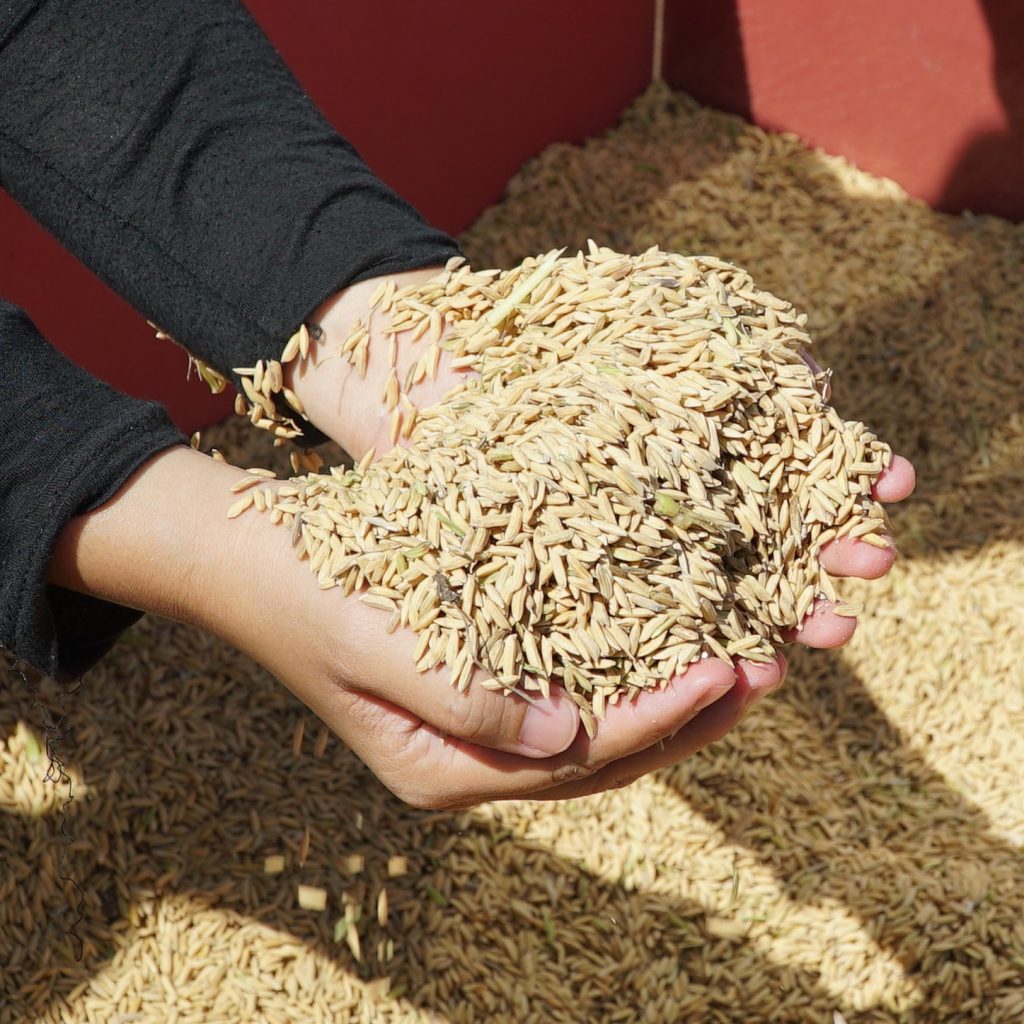
Brunei’s rice production peaked in 2015 with 3,051 metric tonnes of paddy harvested, with weather conditions like El Nino claimed to have limited production to 2,429 and 2,349 tonnes in 2016 and 2017 respectively.
However, the Minister of Primary Resources and Tourism Yang Berhormat Dato Seri Setia Hj Ali Apong has previously said that he’s confident Brunei would bounce back with 3,000 tonnes in 2018, and 4,000 tonnes by 2020.
Brunei’s self-sufficiency targets have shifted over the past 10 years. The previous Ministry of Industry and Primary Resources set a target of 60% by 2015, but local produce only accounted for 4% that year.
The target outlined at last year’s Legislative Council meeting was to achieve at least 20% self-sufficiency by 2020. The Sultanate consumes around 30,000 tonnes of rice annually, but local production (measured after milling) has yet to break 2,000 tonnes.
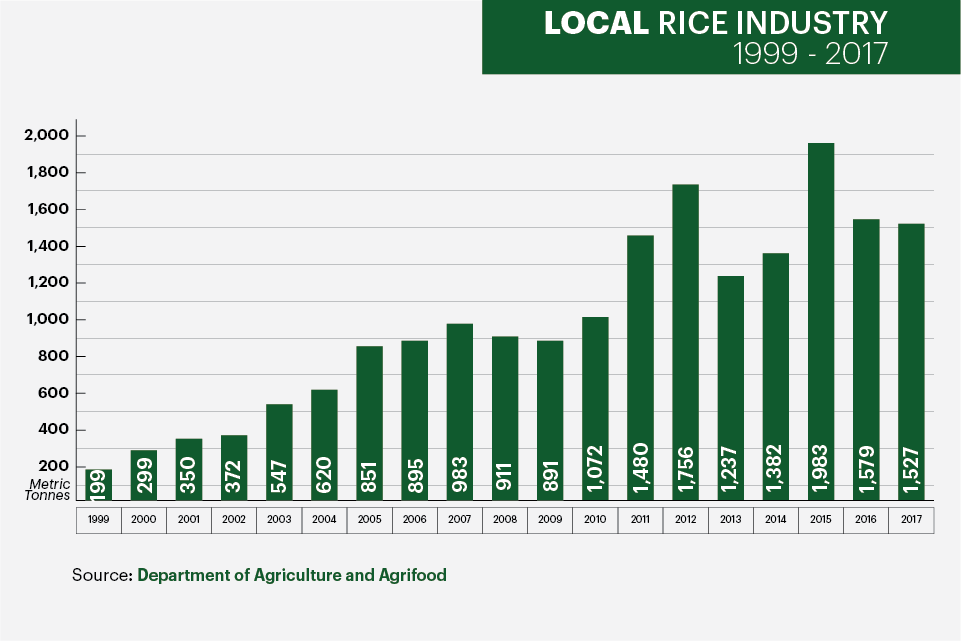
Brunei has faced several challenges in increasing its rice productivity, including access to water, soil acidity
The scheduled upgrade of the Imang dam will play a key role in improving water supply to nine rice fields in Brunei-Muara. $3.9 million will be spent to increase the dam’s capacity by 10% or one million cubic
For rice fields without proper irrigation systems, DAA has commissioned a project to identify groundwater sources. KKPs in Bebuloh and Sengkuang have returned positive, with trial wells to be constructed in next month.
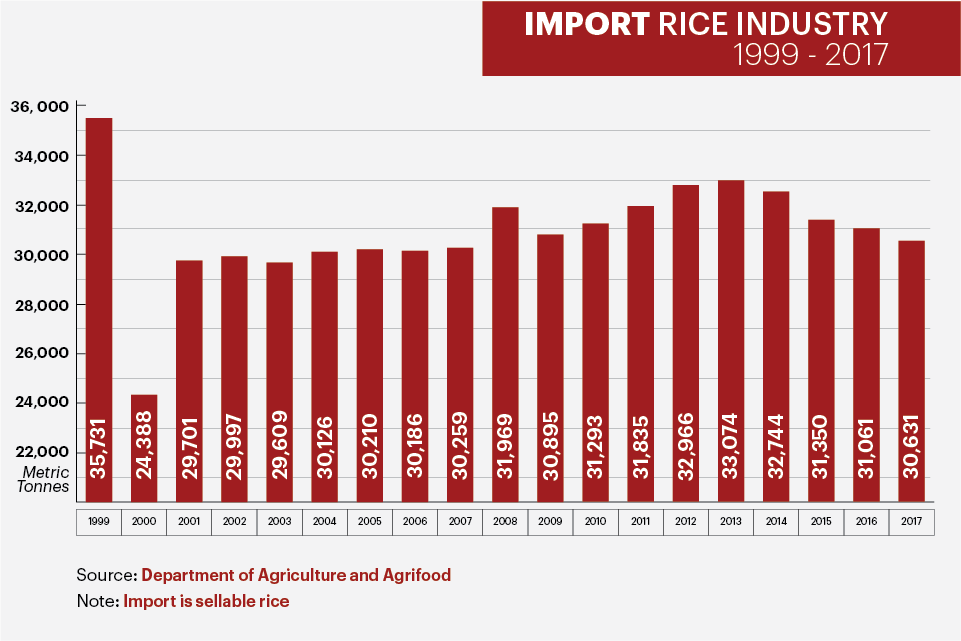
The chairman of Brunei’s largest rice producer KOSEKA Hj Mohd Sahlan Hj Hidup said that after years of conditioning Wasan’s soil with fertilizers and irrigation, its overall acidity has been reduced. However, he said that other newer designated areas would need quicker remediation before achieving profitable yields.
The 500-hectare Kandol – set to be Brunei’s largest rice farm – is less likely to face the same acidity issue, with DAA selecting it for its unique composition, made up of a finer-grained fertile soil which carries alluvial sediment deposited from water flooding over.
“With Kandol we will be building spillways as part of the flood mitigation, as the area is prone to flooding (in its natural state),” said Khairunnisa.
Currently, the vast majority of locally produced paddy rice is sold to the government under a “buy-back” scheme at $1.60/kg. The government then mills it into
Hj Mohd Sahlan said with improved infrastructure and more reliable, high yielding varieties, local farmers can be competitive against imports and wean off subsidies.
“If we are able to consistently yield – season after season – six tonnes to eight tonnes then we (farmers) we could earn at the retail price of $1.20 (without the
Watch: His Majesty harvests Sembada at Wasan


